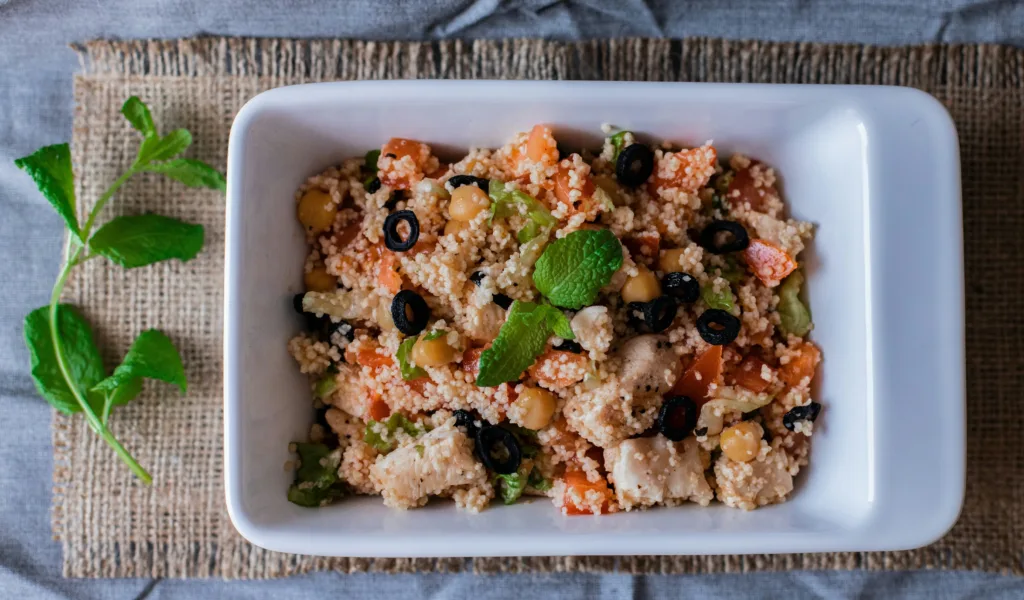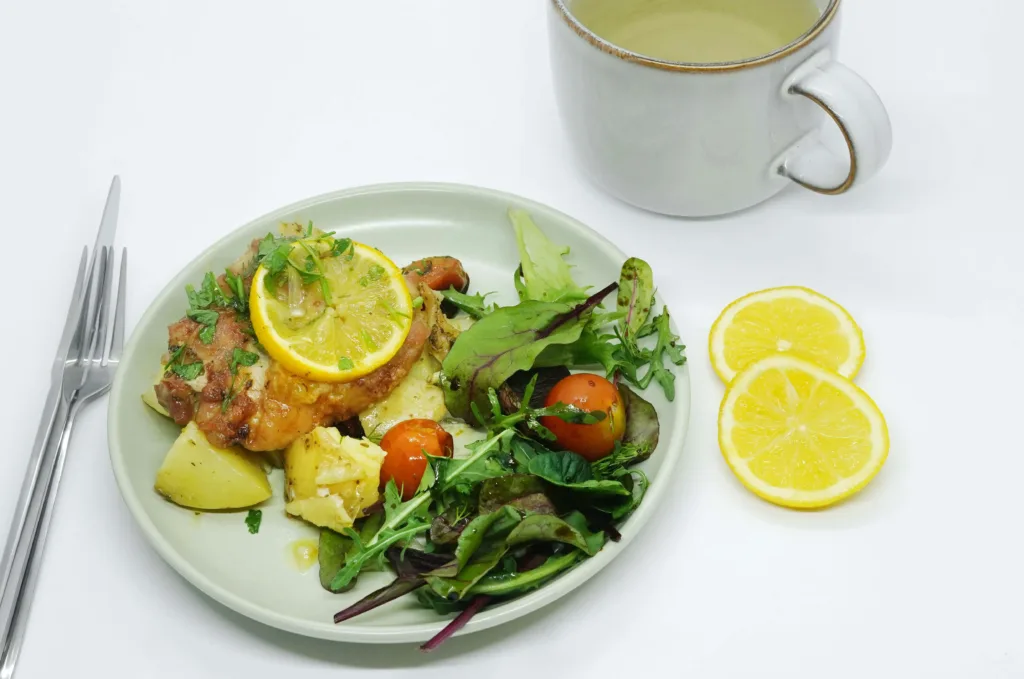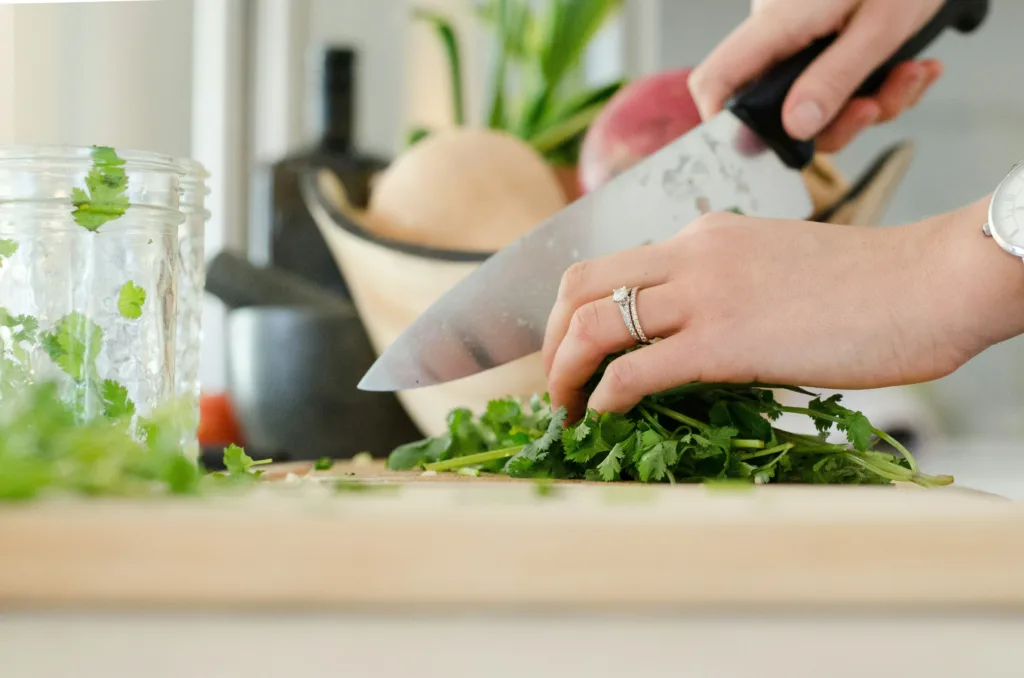Finding a meal plan that helps you feel good, keeps your energy steady, and doesn’t leave you constantly hungry? That’s the sweet spot. For many people, 1,800 calories hits that balance – it’s not too restrictive, but still structured enough to support weight loss or maintenance. The trick is in how those calories are used. It’s not just about the number – it’s about building meals that feel like actual meals. Food that’s filling, tasty, and doesn’t have you raiding the fridge two hours later. This approach is flexible, doable, and realistic for daily life.
That’s exactly why we built ReciMe. If you’re following a plan like this, you need more than just a handful of saved links and a paper list on the counter. ReciMe helps you save recipes from TikTok, Pinterest, Instagram, or even notes, organize them in one place, and turn your weekly meal plan into a grocery list that actually makes sense. You can adjust meals to fit your calorie range, mix and match ideas across the week, and stay on track without losing your mind midweek. Download ReciMe now and let meal planning feel way less chaotic.


Who Should Follow an 1,800 Calorie Diet?
Honestly, it depends on where you’re starting and what your day looks like. If you’re moderately active – maybe you walk a lot, chase after kids, hit the gym a few times a week, or just don’t spend your whole day sitting – 1,800 calories can be a solid sweet spot. It’s enough fuel to keep your brain sharp and your energy up without tipping into excess.
This calorie level also works well for folks who are trying to lose weight but don’t want to go too low and end up hangry by 3 p.m. (we’ve all been there). It’s a great starting point if 1,200 or 1,500 calories just doesn’t cut it for you – because let’s be real, no one wants to live off air and salad leaves. It can also be a good maintenance range if you’re done with dieting and just want a rhythm that keeps things stable. There’s room here for meals that feel real – actual breakfast, lunch, and dinner, with snacks that don’t feel like sad afterthoughts.
Of course, it’s not one-size-fits-all. If you’re super active, training hard, or have specific health needs, this number might be too low. On the flip side, if you’re mostly sedentary or dealing with a smaller frame, it could be a bit high. Your best bet? Start here, listen to your body, and adjust as you go. It’s not a rigid rule – it’s just a jumping-off point that actually makes sense for real life.

What to Include in Your 1,800 Calorie Day
You’ve got 1,800 calories to work with, which is more than enough to build meals that actually satisfy you and don’t feel like a diet. The key is making sure those calories come from foods that give you something back – like energy, focus, and that full-but-not-stuffed feeling. It’s less about restriction and more about balance. Here’s how to make it work without getting overwhelmed.
A Real Breakfast That Holds You Over
Start with something that fuels you, not just fills you. Oatmeal with nut butter and fruit, scrambled eggs with toast and avocado, or Greek yogurt with berries and a bit of granola all hit that sweet spot of carbs, protein, and fat. You want to walk away from breakfast satisfied – not reaching for a second coffee out of hunger.
A Lunch That Feels Like a Meal
This is your midday reset. Aim for something that includes protein (like chicken, beans, tuna, or tofu), fiber-rich carbs (think brown rice, quinoa, or whole grain bread), and a pile of veggies. It should be colorful, filling, and maybe even something you actually look forward to eating.
Dinner That Anchors Your Day
Dinner should close things out without sending you into a food coma. A bowl with roasted veggies, grains, and protein works well, or even a pasta dish loaded with greens and something hearty like salmon or lentils. It’s a good time to wind down with a warm meal that feels like comfort without being heavy.
Snacks With Intention
There’s space for snacks – use it. Mid-morning or afternoon, have something that tides you over without spiking your blood sugar. A handful of almonds, fruit with nut butter, or veggies with hummus are solid go-tos. The goal here is to snack with a purpose, not out of boredom.
A Bit of Breathing Room
You don’t need to obsess over hitting 1,800 exactly. Some days might be 1,750, others 1,850 – it evens out. Leave a little room for the things you enjoy, whether that’s a piece of dark chocolate or a glass of wine. Flexibility makes the plan sustainable, and that’s what actually matters.

7-Day Sample 1,800 Calorie Meal Plan
This isn’t about eating the same bland chicken and broccoli every day. A good meal plan should give you structure and variety, with meals that feel doable on a Tuesday night and still taste like something you actually want to eat. Here’s a 7-day example to help you get started – no calorie counting app required, just common sense, balance, and food that feels like food.
Day 1
Simple, steady meals to ease in. Basic go-to ingredients like oatmeal, grilled chicken, and soft fruits make this day feel light but satisfying. Nothing spicy, nothing heavy.
- Breakfast: Two spiced banana oat muffins made in advance, paired with ½ cup of plain Greek yogurt and a clementine. The muffins bring warm flavor, the yogurt keeps you full.
- Lunch: One medium baked sweet potato split and filled with ¼ cup navy beans, 2 tbsp salsa, ¼ avocado, a scoop of plain yogurt, and some fresh chives. Creamy, zesty, and surprisingly filling.
- Dinner: A pan-seared chili-rubbed salmon filet served over mashed roasted eggplant with lemon and garlic. Finish with a small bowl of frozen grapes for something sweet and cold.
- Snacks: Skewered pineapple chunks dusted with cayenne and served with coconut chips and a few cashews. Later, grab a clean-label protein bar like RXBAR.
Day 2
Bright, savory flavors and crunchy textures to keep you feeling sharp and well-fed. Everything’s easy to prep ahead or assemble on the spot.
- Breakfast: Sprouted grain tortilla packed with scrambled eggs, creamy avocado, chopped cilantro, and a tiny hit of chili powder.
- Lunch: Lentil salad tossed with chopped cucumber, tomatoes, shredded carrots, scallions, and walnuts. Serve over spinach and dress with a quick olive oil-vinegar mix.
- Dinner: Maple-glazed chicken thighs roasted until golden, served with a handful of frozen sweet potato fries and steamed green beans.
- Snacks: Raw veggie sticks with a creamy Greek yogurt + Laughing Cow dip. In the afternoon, Siggi’s yogurt with berries and a small handful of pistachios.
Day 3
Fresh, colorful, and a little more playful. Lettuce cups and parfaits keep things light but still satisfying.
- Breakfast: Greek yogurt parfait layered with KIND granola, sliced kiwi, and blueberries. A little sweet, a little tangy, and crunchy in all the right ways.
- Lunch: Romaine lettuce cups filled with pre-cooked shrimp, shelled edamame, chopped red bell peppers, a sprinkle of peanuts, and a teaspoon of teriyaki sauce.
- Dinner: Spaghetti squash “noodles” topped with turkey meatballs and your favorite tomato sauce. Add a tablespoon of Parmesan if it fits.
- Snacks: A mini cheese plate with ½ cup grapes and a slice of part-skim mozzarella. Later, half a pear with 1 tbsp peanut butter and a few almonds.
Day 4
This one’s all about speed and comfort. Everything comes together fast but still feels like you’ve made an effort.
- Breakfast: Two toasted whole grain waffles topped with 1 tbsp almond butter, 1 tbsp chopped dates, and a pinch of cinnamon.
- Lunch: DIY Chipotle-style burrito bowl with lettuce, sautéed fajita veggies, steak, and pinto beans. Skip the rice and dressing – use corn salsa for extra pop.
- Dinner: Roasted salad with chickpeas, mushrooms, and diced squash, tossed with olive oil and lemon. Add a bowl of fresh or frozen strawberries for dessert.
- Snacks: A KIND bar in the morning, 1 oz pumpkin seeds later. End the day with pumpkin “pudding” – ½ cup canned pumpkin blended with Greek yogurt, cinnamon, and a drizzle of honey.
Day 5
A cozy, warm-food kind of day. A mix of bowls, roasts, and a solid dessert to round it out.
- Breakfast: A warm bowl of wild rice mixed with sautéed spinach and topped with a sunny-side-up egg. Add hot sauce if you like heat in the morning.
- Lunch: Butternut squash and frozen veggie mix tossed with 1 tsp dried cranberries, a little honey, and seasoned to taste. Serve with sliced turkey breast (5 oz, skinless).
- Dinner: Shrimp sautéed with garlic and olive oil, served over a black bean salad with lime juice and red onion. Dessert? A baked apple with cinnamon.
- Snacks: ½ cup strawberries with a spoonful of dark chocolate chips, plus carrot and bell pepper sticks dipped in hummus.
Day 6
Low-stress meals that feel fresh but not fancy. Perfect for a weekend or low-energy day.
- Breakfast: Muesli with raspberries and sliced banana, served with almond milk or plain yogurt depending on your mood.
- Lunch: Whole grain sandwich with hummus, carrots, cucumber, and spinach. Add one slice of cheddar and a clementine on the side.
- Dinner: Curried sweet potato and peanut soup served warm with a slice of whole grain baguette. Comfort food without the crash.
- Snacks: Morning snack: one apple with 1 tbsp peanut butter. Later: cheese stick or a small handful of almonds.
Day 7
End the week with flexible, fridge-friendly meals that don’t demand a full grocery trip. Use what’s left and keep it easy.
- Breakfast: Bell pepper rings pan-seared with an egg cooked in the center, topped with avocado salsa. Serve with a banana.
- Lunch: Leftover soup from Day 6 or throw together a grain bowl with cooked lentils, spinach, and whatever roasted veg you’ve still got.
- Dinner: Spinach-artichoke dip pasta made with a creamy Greek yogurt sauce, served with a big side salad and balsamic vinaigrette.
- Snacks: 1 cup raspberries with a few squares of dark chocolate, and any leftover fruit or nuts that still look good.
You can mix, match, or swap out ingredients based on what you have. The goal isn’t perfection – it’s consistency. And if one of these meals ends up being cereal for dinner? You’re still doing fine.

Meal Prep Tips for Success
Meal prep doesn’t have to mean cooking everything in advance or turning your kitchen into a full-time assembly line. It’s more about giving the future-you a little breathing room when things get hectic. If you’re trying to stick to an 1,800 calorie plan, here are a few prep habits that actually make life easier – without the overwhelm.
- Pick 2-3 repeat meals to batch cook: Think oatmeal cups, lentil salad, roasted veggies, or grilled chicken. Stuff that keeps well and tastes just as good on day three.
- Chop once, use all week: Pre-cut your onions, peppers, carrots, and cucumbers so they’re ready for snacks or quick meals – no tears or hassle midweek.
- Make one grain and one protein ahead: Cook a big batch of rice, quinoa, or farro, and prep a protein like baked tofu, eggs, or rotisserie-style chicken to mix and match.
- Pre-portion your snacks: Bag up nuts, cut fruit, or yogurt add-ins like granola ahead of time so you’re not reaching for random stuff when you’re hungry.
You don’t need to prep every bite – just enough to avoid the midweek scramble. The goal is to make meals easier, not perfect.
How to Adjust This Plan for Your Goals
Think of this plan as a jumping-off point, not some rigid rulebook. Everyone’s needs are different – what works great for one person might leave someone else feeling drained or overly full. The beauty of an 1,800 calorie plan is that it’s flexible. You can scale it up or down depending on your body, your routine, and how you actually feel during the day.
Not Seeing Progress? Try a Small Tweak
If weight loss is your goal and nothing’s budging after a couple weeks, try trimming around 100 to 150 calories per day. Nothing drastic – maybe swap out a high-calorie snack for something lighter or adjust your portion sizes just a bit. Keep everything else the same so it’s still easy to follow.
Feeling Tired or Constantly Hungry? Add a Little More
Some days just need more food. Maybe you walked more than usual, worked out harder, or just woke up hungrier – totally normal. Add a protein-rich snack or bulk up your meals slightly with veggies, beans, or whole grains. You’re not “messing it up.” You’re responding to what your body’s asking for.
Training More? Fuel Like It
If you’re lifting, running, or doing anything that ramps up your activity, you’ll probably need a bump in calories to recover and feel good. That might mean extra carbs around workouts, or a bigger lunch with more protein. Let your movement guide how you eat, not the other way around.
Conclusion
If there’s one takeaway here, it’s this: a meal plan should work with your life – not against it. The 1,800 calorie range is a solid middle ground for a lot of people. It’s enough to eat well, feel full, and still support your goals without making you count every bite or skip the foods you love. Whether you’re trying to lose a bit of weight, maintain what’s working, or just get a little more structure in your week, this approach gives you room to breathe. Planning doesn’t have to mean perfection. Some weeks you’ll cook more, others you’ll rely on pre-made shortcuts – and that’s fine.
FAQ
1. Is 1,800 calories a good amount for weight loss?
For a lot of people, yes. It gives you enough food to feel full while creating a moderate calorie deficit – especially if you’re moderately active. It’s a much easier place to start than jumping straight to 1,200 or 1,500, which often ends in burnout (and snack binges).
2. Can I still eat carbs on this plan?
Absolutely. Whole grains, fruit, beans, and even pasta all have a place here. The trick is balance – pair your carbs with protein, fiber, and fat so they keep you full instead of spiking your energy and crashing it an hour later.
3. What if I go over 1,800 calories some days?
Totally normal. One high-calorie day won’t ruin anything. Your body works on patterns, not perfection. Just aim for consistency over time, and you’ll be fine.
4. Do I need to track everything I eat?
Not unless you want to. Some people find tracking helpful in the beginning, but once you get the hang of portion sizes and meal structure, you can usually just follow your plan without logging every bite.
5. Is this plan good for maintenance, too?
Yep. If 1,800 keeps your weight stable, it’s a great range for maintenance. You might need to tweak it slightly depending on how active you are or how your body responds, but it’s a solid place to land for most people.
